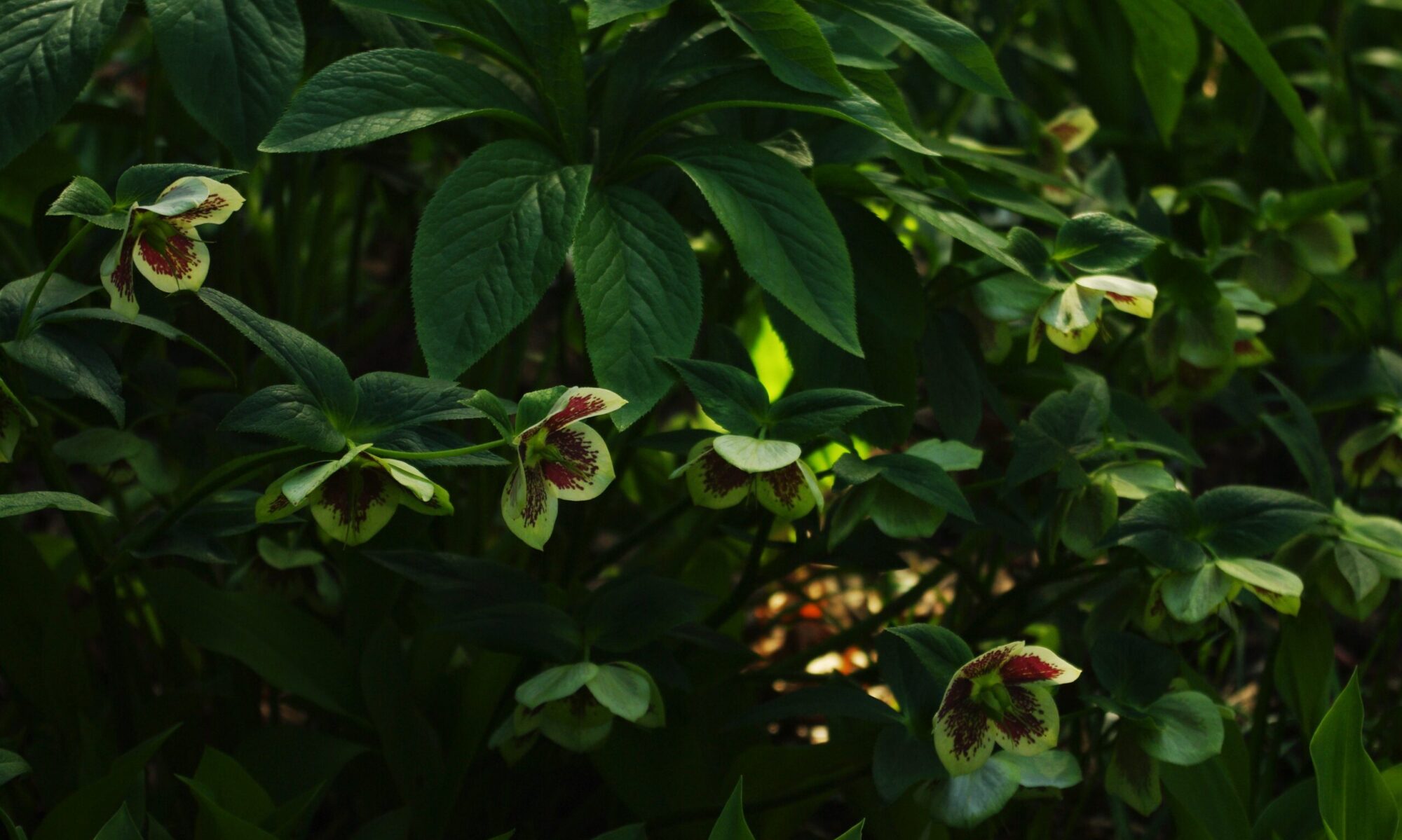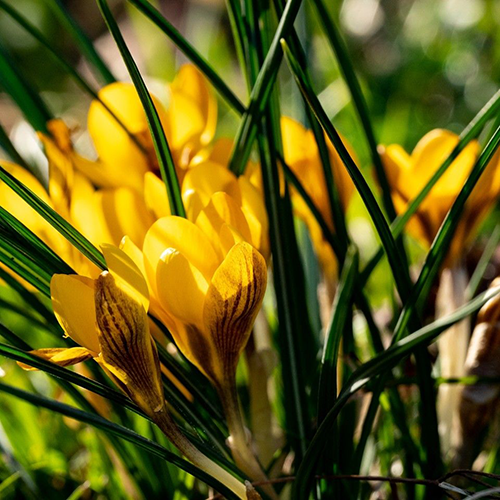
The entire internet and the world of SEO pushes towards making wordy posts that result in a ton of filler and jargon that drives me totally nuts. If you’re looking for the basic details, here they are.
Full/part sun, perennial, rich and well drained soil, hardy to Z3, 3-6″ tall. Naturalizes nicely. Plant 2-3″ deep in fall or early spring. Deer resistant, drought tolerant. Blooms late winter / early spring or fall, depending on variety.
See our full list of crocuses we’ve got for this fall planting season.

You’ve probably seen these small, cheerful blooms – perhaps poking up out of a late snowfall, or studding an idyllic West Coast meadow. While crocuses aren’t indigenous to the Pacific Northwest, they naturalize readily and non-invasively, offering bees welcome pollen during the last months of winter where food is hard to come by.
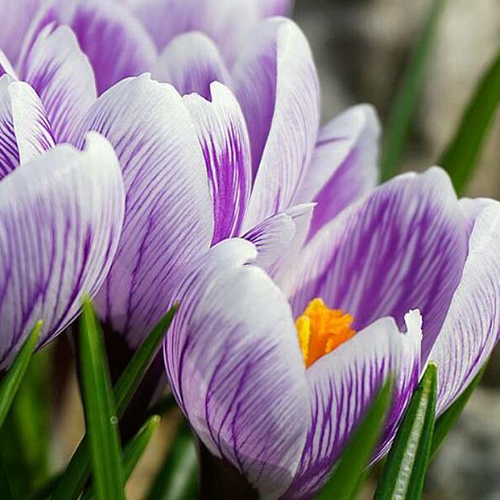
All crocuses prefer a rich, well-drained soil in full sun to part shade. They do particularly well under deciduous trees, as they typically bloom before the leaves have set or after they’ve fallen, and so can make good use of the extra light. Plant them 2-3″ deep in fall or early spring. If you have hungry squirrels around, try placing mulch, wet newspaper, or even hardware cloth over the freshly planted corms for a few weeks – those fuzzy buggers seem to have a sixth sense for finding the freshly planted bulbs, and will dig them up and have a feast. Oddly, they don’t seem to want them once they’ve been established (maybe the smell goes away?) so I’ve never had any issues after the first few weeks after planting.
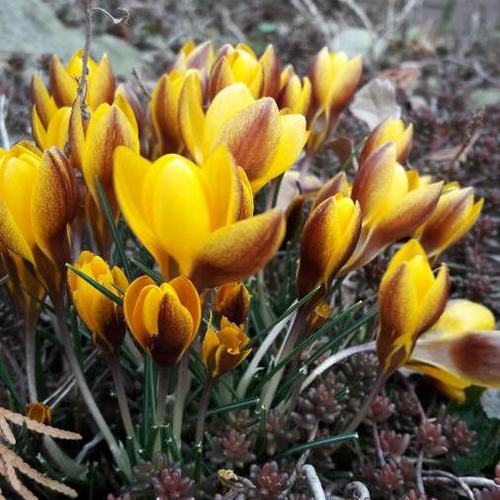

If you’ve been particularly lucky, you may have spotted the more unusual fall crocus. These blooms seem to rise out of the fallen leaves like ghosts, almost glowing in their translucence. They tend to have longer petals and tend towards keeping them gathered, lending an elegant and almost unearthly appearance.

The most famous crocus – the saffron crocus – is in fact a fall-blooming species. The long anthers are what are painstakingly collected by hand in the millions each year, leading to the outrageous price of the spice. They do grow well in our climate, so if you do on occasion use a bit of saffron, it may bring you the same pleasure it brings us to collect your own.

Perhaps its because crocuses appear in the liminal seasons that I find them so unearthly. Their name is also rooted in a sad story of longing – Krokus was a human who was unhappily in love with a nymph, Similax, and the gods turned him into a crocus. That he appears for us both in the time of decay and farewells, and in the time of renewal and rebirth is a potent metaphor.
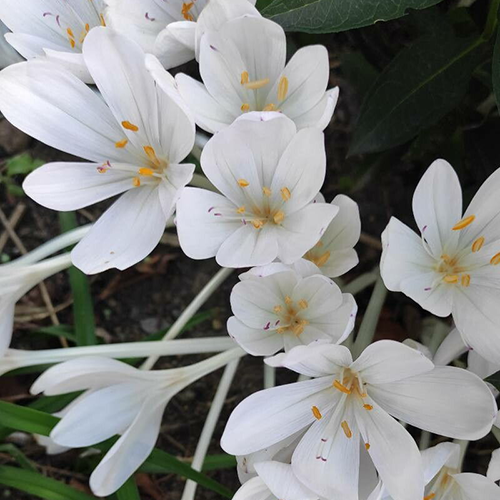
Of all the bulbs, crocuses bring me the most joy. They stud the meadow of the cemetery in which my grandmother rests, and every time I see their sweet faces pop up in the dragging dreary months of late winter, my heart is cheered. I hope yours is too.
All the beauties you see here are ones we’re carrying for the autumn planting season, for which you can place an order (for pickup in Courtenay) here.
